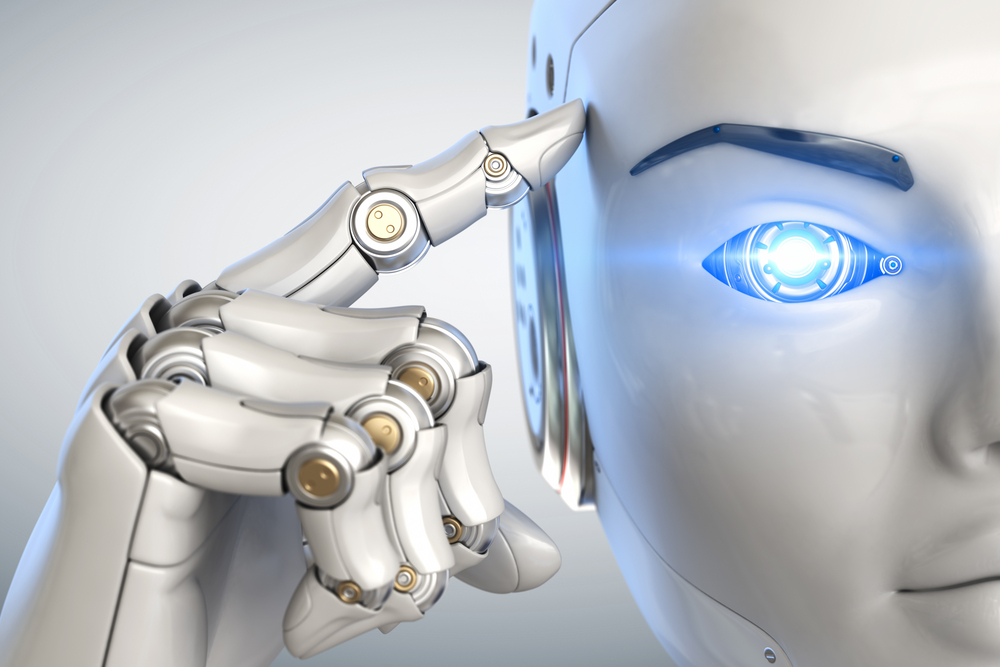It's Time to Talk About AI
By Dave Nelsen
It's time to talk about AI. No, not some guy named Al. We're talking about A.I., as in artificial intelligence.
Side note (a complaint) to whoever made fonts and lacked sufficient creativity to pick different shapes for the upper case “I” and the lower case “l”: You had almost infinite potential options for figures, and you couldn’t do better than this? Come on!
Side, side note: It’s funny how old terms stick around even as technology evolves. Five hundred years ago, typesetters kept their capital letters in the upper case (literally), and their uncapitalized letters in the lower case. Here we are today still talking upper case and lower case. Amazing. On topic, did you recently “film” something, or maybe “tape” someone. Or maybe you listened to a record? A record of what? Hilarious.
Oh yeah, AI.
I tell people all the time that the secret to success in a world of exponentially-accelerating technological change is … (get ready for it!) … being a continuous learner. It makes sense, right? We all need to do more of it. I personally embrace audiobooks via Audible (an Amazon service – be sure to tell Jeff Bezos I sent you so I get my affiliate cut) and podcasts (mostly free).
Practicing what I preach regarding continuous learning, earlier this year I was on LinkedIn and saw an ad for MIT’s AI Leadership online course. Click. $2,600 later I was formally a student again with 10-15 hours of weekly reading and homework (for six weeks).
Side note (I know, it’s a bad habit): The course “list” price is $3,200 but if you don’t buy at first, you will receive an increasingly desperate series of escalating discount offers. Do not tell me if you do even better than $600 off, thank you.
 Here are the two most important things I didn’t know about AI.
Here are the two most important things I didn’t know about AI.
Number one: We tend to think of AI as replacing human workers (which will eventually happen), but in the next five years AI is more about helping us humans be more efficient, more effective, and focused on higher-value tasks. Awesome!
Number two: While we tend to think about AI as being applied to “workers,” some of its best applications will be for “leaders.” That’s pretty surprising. So, if you’re a leader, ready or not …
Actually, AI is already all around us and has probably helped you in a dozen different ways so far today. Did you use Waze (“social” GPS) to navigate somewhere? Did it tell you when to leave based on live traffic conditions? Did you Google something? Did you read your LinkedIn newsfeed or use the “CrystalKnows” plug-in to get conversation coaching advice about a new prospect? Did you buy something you didn’t plan to buy on Amazon based on a suggestion that “You might also like …”? Yep, that’s AI in action. So let’s talk about AI to help us be better leaders.
In the MIT AI Leadership course, every week part of our homework involved meeting up with our global cohort (a total of five learners per group). We did so in a new environment called Riff (see https://riffanalytics.ai/). If you’ve ever used Zoom and Slack, or Microsoft Teams video and “channels,” you’ll find the live part of the Riff experience to be very familiar … until the meeting end.
Side note: If you’ve NEVER used Zoom and Slack, or Microsoft Teams video and “channels,” as Jack Welch once said, “When the rate of change on the outside exceeds the rate of change on the inside, the end is near.” I take this observation in two ways. Yes, it absolutely applies to our businesses, but doesn’t it also apply to our own heads? Indeed. Which reminds me of a relevant billboard advertisement by Prudential: “A robot can’t take your job if you’re retired.” So, there’s your alternative.
Back to Riff-post-meeting, and this is just one example of how AI can help us be better leaders: Click into the meeting metrics and be amazed at the number of teachable moments, for your team and for you personally. I ask you, how many of us leaders ever get honest, unvarnished feedback? Right; exactly never! AI is not shy and apparently does not fear “speaking truth to power.” OK, so it’s not as smart as humans … yet!
Maybe the most interesting Riff chart is a minute-by-minute graph of your “engagement” and “energy.” The latter metric is critical because your team’s energy is likely to mirror your own. Wouldn’t it be cool to have an unbiased assessment of how you’re “showing up?” 
You also get a fabulous “flow” chart showing how much every participant interacted with every other participant. You’ve probably heard that “none of us is as smart as all of us.” Now you have a way to see if “all of us” are participating.
You also get to see how many times you (and others) interrupted (bad) or interjected (typically good) to build on others’ contributions. How the AI distinguishes an interruption from an interjection I’m curious to know as I’m not sure I know myself. However, knowing about these conversation dynamics can help you improve team productivity.
There’s so much more to say about AI applications to leadership but my column space here is limited so maybe just take the course. Tell Leo Reif (MIT President) that I sent you so I get my affiliate cut!
One last thought: I also learned in the course that even though I am not anything close to a technical expert in the details of AI, as a leader I’m responsible for its ethical application. And so are you. That should get you thinking.